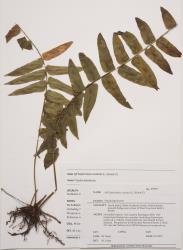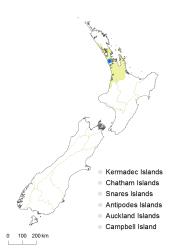- ≡ Polypodium exaltatum L., Sp. Pl. 1326 (1753)
- ≡ Aspidium exaltatum (L.) Sw., J. Bot. (Schrader) 1800(2): 32 (1801)
- ≡ Nephrodium exaltatum (L.) R.Br., Prodr. Fl. Nov. Holland. 148 (1810)
- ≡ Hypopeltis exaltata (L.) Bory in Bélanger, Voy. Indes Or., Bot. 66 (1833)
Nephrolepis exaltata can be recognised by its dull, spreading scales on the rhizome and stipe bases, lack of tubers, sterile primary pinnae which are not strongly auricled acroscopically, minutely serrate pinna margins, acute pinna apices, and reniform indusia. The pinnae are generally longer and wider than those of N. cordifolia and N. flexuosa, the pinna apices are acute rather than obtuse to rounded, the margins are minutely serrate rather than lobed, and the indusia are reniform rather than lunulate. It differs from N. brownii in its scales, which are dull and spreading rather than shiny and appressed; by its pinna margins, which are minutely serrate rather than irregularly serrate to lobed; and by its sterile pinnae, which are not strongly auricled.
North Island: Auckland.
Altitudinal range: 40–60 m.
Nephrolepis exaltata is naturalised as a casual species in a few places near Oratia in the Waitākere Ranges, Auckland.
Occurs naturally in Florida, Caribbean islands, Mexico, Panama, French Guyana and Hawai‘i (Hovenkamp & Miyamoto 2005). It is thought to be naturalised on the Canary Islands, St Helena (Hovenkamp & Miyamoto 2005), parts of southern Africa (Roux 2009) and Rarotonga (P.J. de Lange, pers. comm.).
Nephrolepis exaltata grows on roadside banks and stream banks, probably as an escape from cultivation. Spread is assumed to be vegetative.
Large (2016), Large & Farrington (2016). Voucher: UNITEC 9557, 2016.
Large & Farrington (2016) noted that Nephrolepis exaltata was widely available as a house plant in New Zealand, sold under the names Boston fern and Boston lace.





